Scientist of the Day - Raphael Sanzio
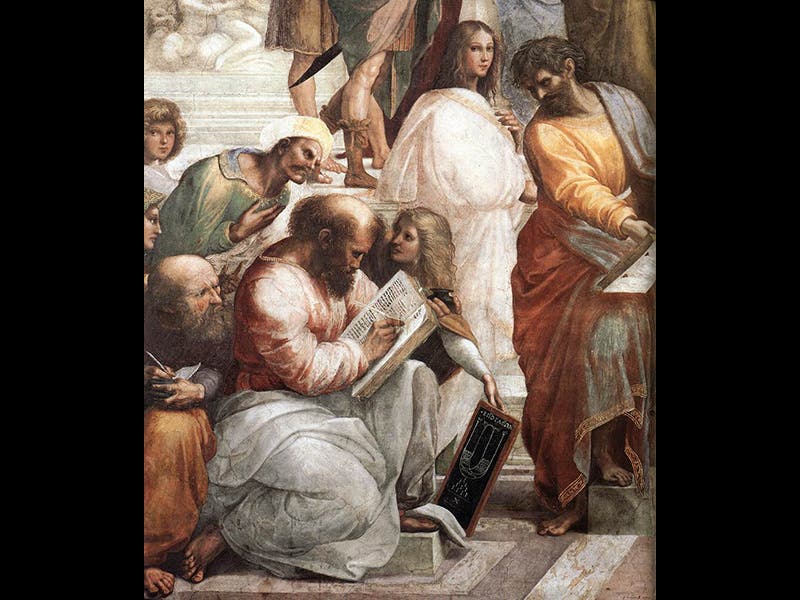
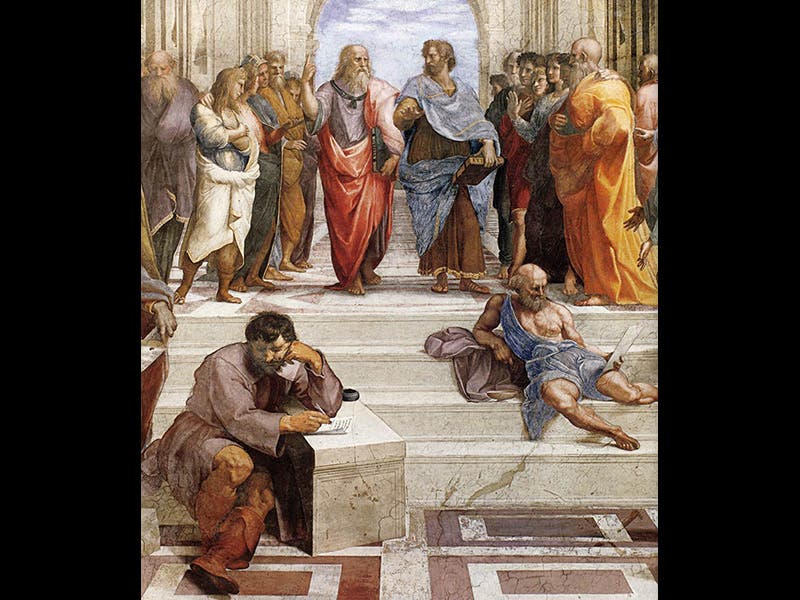
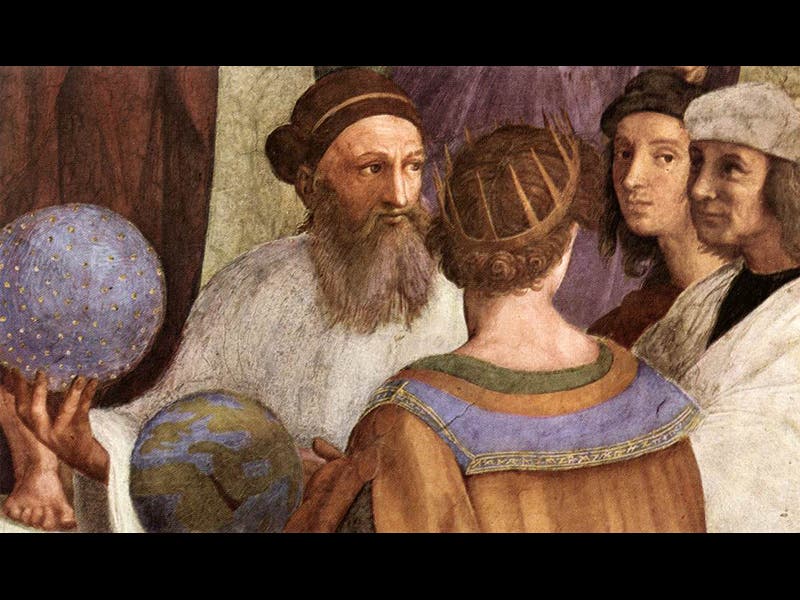
Raphael Sanzio, the great Renaissance artist, was born Apr. 6, 1483. If you dispute this date (some do), we note that Raphael died on Apr. 6 (no dispute here), so one way or the other, this is the correct day to pay tribute. Sometime between 1509 and 1511, Raphael completed one of the most famous group portraits of all time, The School of Athens. Painted in fresco on one of the walls of the Stanza della Segnatura in the Apostolic Palace of the Vatican, The School of Athens portrays the collective scientific wisdom of Greek antiquity (first image). Here one can find portrayals of Plato, Aristotle, Socrates, Pythagoras, Euclid, Ptolemy, and a host of others. Under the arch in the center, for example, stand Aristotle and Plato (second image), and we know this because Plato, on the left, clutches a copy of his book Timaeus, while Aristotle holds the Ethics. But you don’t really need to read the labels on the spines to make the identifications--Raphael has used gestures beautifully to distinguish the two philosophers. Plato points upward, to the world of forms, and Aristotle downward, to the sensible world; seldom have two philosophical schools been captured more clearly and more economically.
Other Greek natural philosophers depicted by Raphael are, at front left, Pythagoras, drawing harmonic proportions in a book (third image), and at front right, Euclid (with the dividers, and bald head), Ptolemy the geographer, wearing a crown (and with his back turned), and Zoroaster, holding a celestial sphere (fourth image). At front center, Heraclitus, learning on a block of masonry, ponders whether one can step twice into the same river (fifth image), while Diogenes the Cynic lounges on the steps, apparently tired of looking for an honest man. Raphael even includes his own self-portrait, just to the right of Ptolemy and Zoroaster (sixth image); in a Renaissance painting, you can usually spot the artist’s self-portrait when you find a pair of eyes that are looking right at you, as Raphael’s are here.
The Stanza della Segnatura used to be the room where the Pope signed his papal decrees. He now signs them elsewhere, and who can blame him. Who would want to issue a statement about the world or the soul with Plato and Aristotle looking on?
Dr. William B. Ashworth, Jr., Consultant for the History of Science, Linda Hall Library and Associate Professor, Department of History, University of Missouri-Kansas City. Comments or corrections are welcome; please direct to ashworthw@umkc.edu.


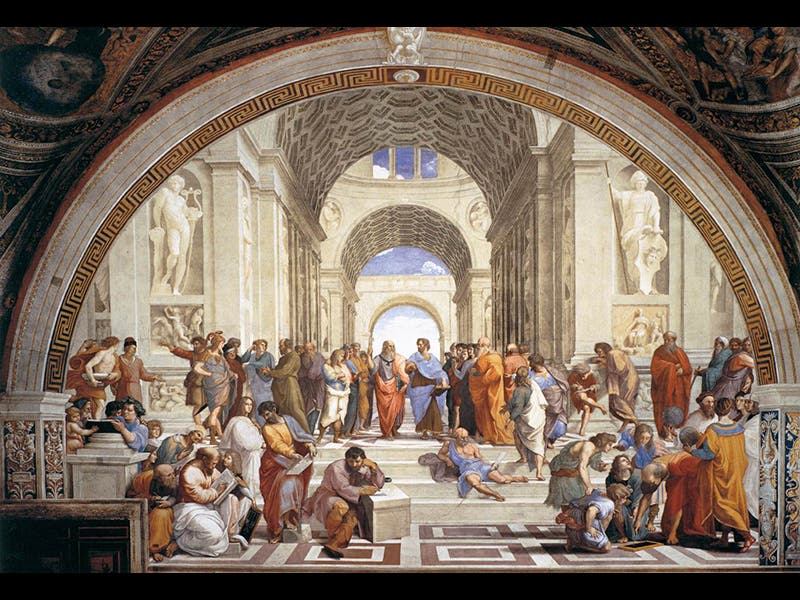
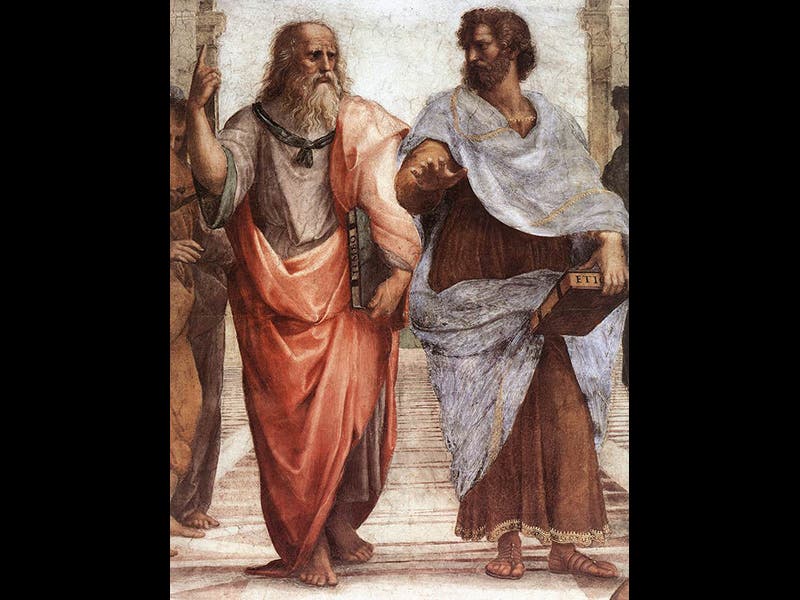
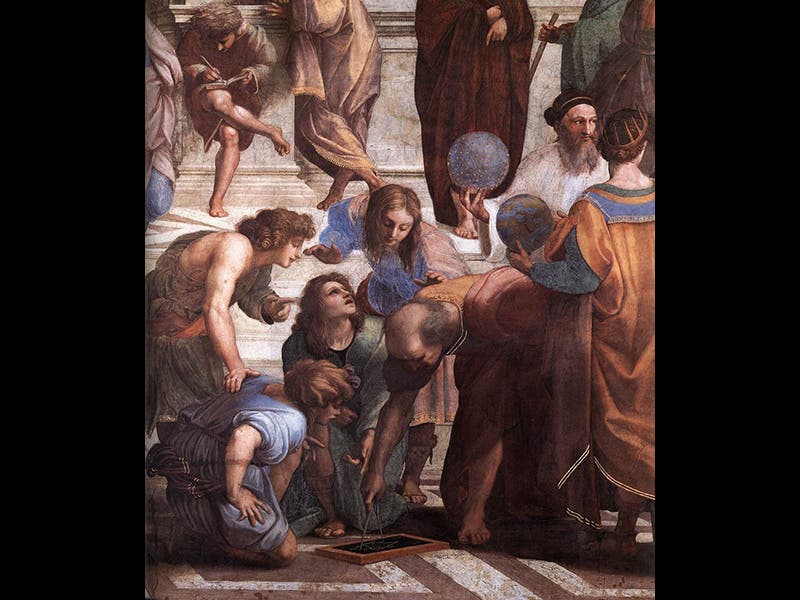


![“Aurora Borealis,” hand-colored wood engraving by Josiah Wood Whymper, [Natural Phenomena], plate 2, 1846 (Linda Hall Library)](https://assets-us-01.kc-usercontent.com:443/9dd25524-761a-000d-d79f-86a5086d4774/0245ffcb-b70c-477c-8792-0a73ebd54eb2/Whymper%2011.jpg?w=210&h=210&auto=format&fit=crop)

